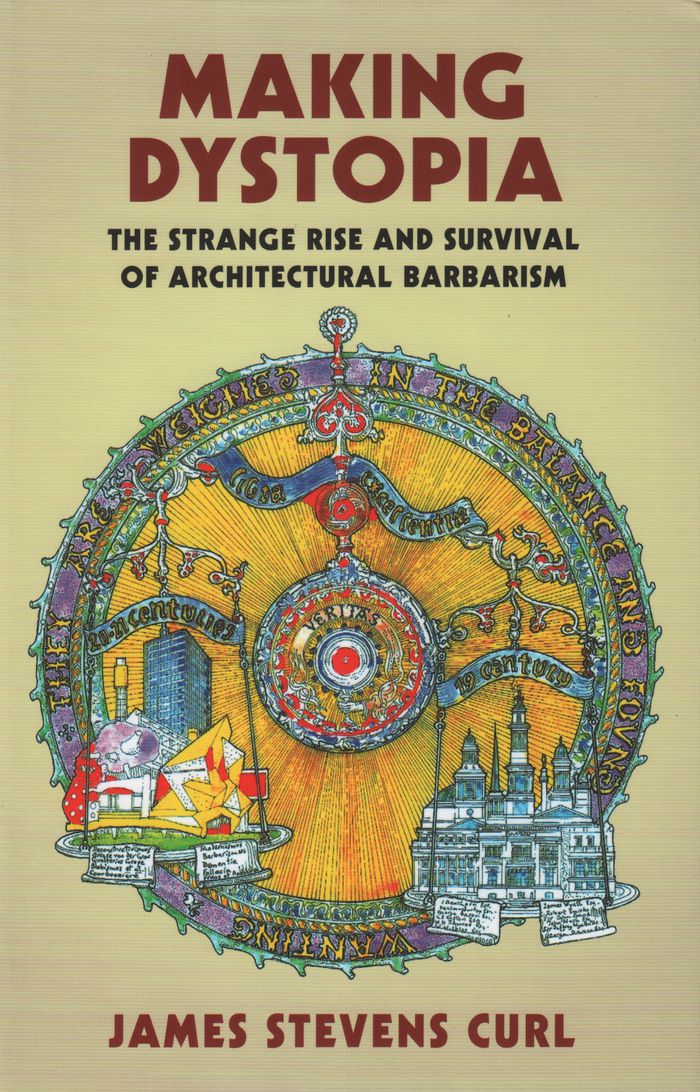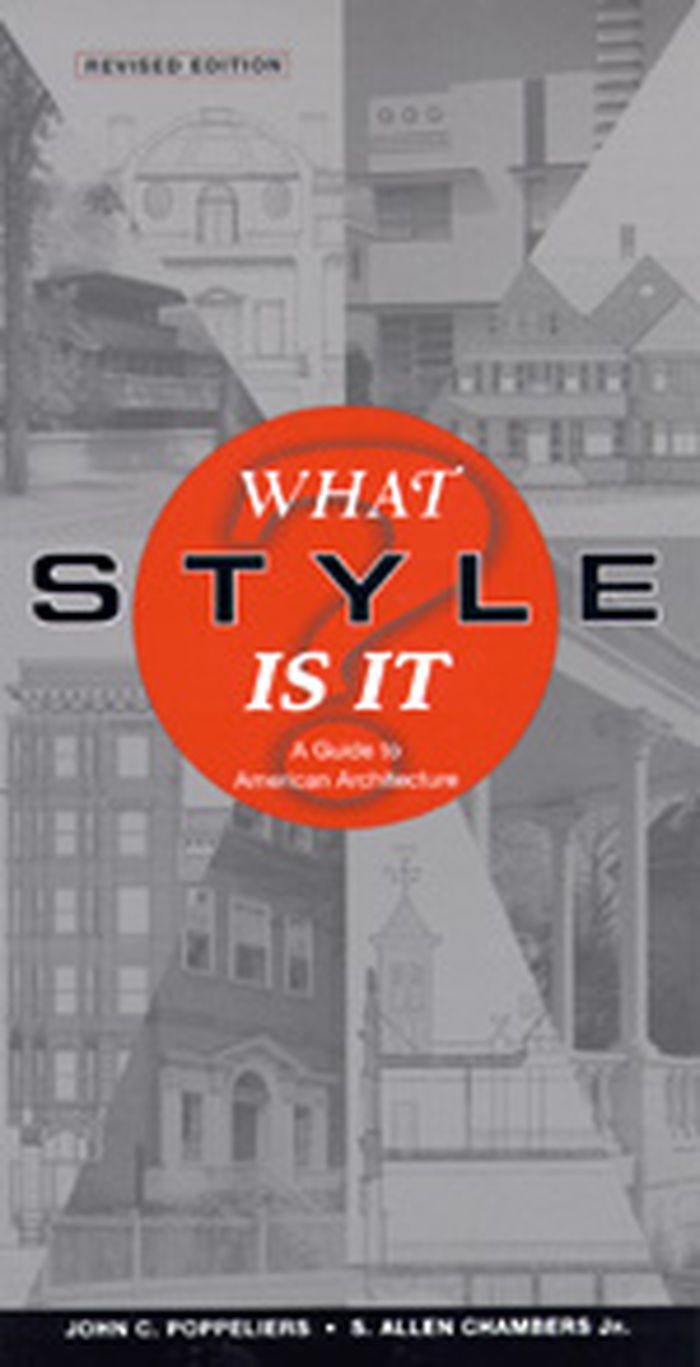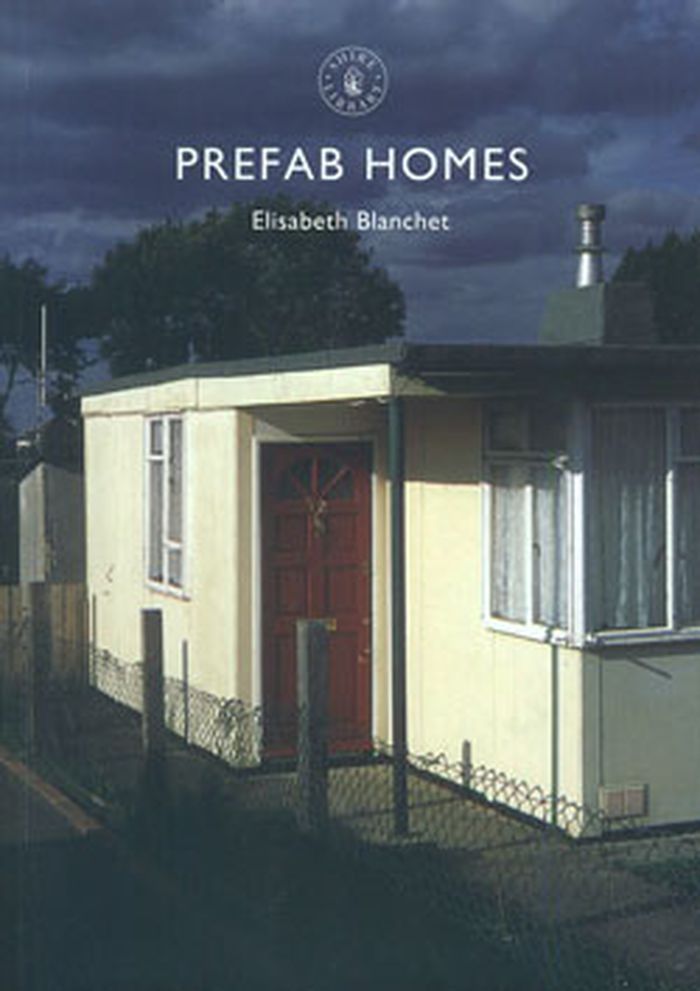$64.95
(available to order)
Summary:
In ''Making Dystopia,'' architectural historian James Stevens Curl tells the story of the advent of architectural Modernism in the aftermath of the First World War, its protagonists, and its astonishing, almost global acceptance after 1945. He argues forcefully that the triumph of architectural Modernism in the second half of the twentieth century led to massive(...)
Making dystopia: the strange rise and survival of architectural barbarism
Actions:
Price:
$64.95
(available to order)
Summary:
In ''Making Dystopia,'' architectural historian James Stevens Curl tells the story of the advent of architectural Modernism in the aftermath of the First World War, its protagonists, and its astonishing, almost global acceptance after 1945. He argues forcefully that the triumph of architectural Modernism in the second half of the twentieth century led to massive destruction, the creation of alien urban landscapes, and a huge waste of resources. Moreover, the coming of Modernism was not an inevitable, seamless evolution, as many have insisted, but a massive, unparalled disruption that demanded a clean slate and the elimination of all ornament, decoration, and choice.
Architectural Theory
$57.95
(available to order)
Summary:
Aldo van Eyck: the Shape of Relativity is the first monograph on an architect whose poetic vision has exerted a far-reaching influence on architectural thinking since the Second World War. It is the story of an eventful career and an intensive study of an oeuvre. Far from limiting itself to architecture, this book deals primarily with the architect's ideas. The book(...)
Aldo van Eyck : the shape of relativity
Actions:
Price:
$57.95
(available to order)
Summary:
Aldo van Eyck: the Shape of Relativity is the first monograph on an architect whose poetic vision has exerted a far-reaching influence on architectural thinking since the Second World War. It is the story of an eventful career and an intensive study of an oeuvre. Far from limiting itself to architecture, this book deals primarily with the architect's ideas. The book contains more than 600 illustrations, of which 100 are in colour, a bibliography of writings by Aldo van Eyck, a selected bibliography of literature about Aldo van Eyck and a list of designs and completed works.
Architecture Monographs
Xanti Schawinsky
$65.00
(available to order)
Summary:
In his lifetime, "Xanti" (Alexander) Schawinsky (1904-79) was best known for his work in the theater department at the Bauhaus. Fleeing Germany before the beginning of the Second World War, he landed at Black Mountain College in North Carolina, where in the 1930s he developed his theory of the "Spectodrama." Involving multimedia productions examining elementary phenomena(...)
Contemporary Art Monographs
March 2015
Xanti Schawinsky
Actions:
Price:
$65.00
(available to order)
Summary:
In his lifetime, "Xanti" (Alexander) Schawinsky (1904-79) was best known for his work in the theater department at the Bauhaus. Fleeing Germany before the beginning of the Second World War, he landed at Black Mountain College in North Carolina, where in the 1930s he developed his theory of the "Spectodrama." Involving multimedia productions examining elementary phenomena such as space, motion, light, sound or color from scientific, technical and performance-based perspectives, the Spectodrama represents an early form of the "happening." Beyond the avant-garde utopias of the Bauhaus and his proto-happening art, Schawinsky also worked as a painter and graphic designer.
Contemporary Art Monographs
$120.99
(available to order)
Summary:
In the period following the Second World War, the Architectural Association (AA) became the only British school of architecture of truly global renown. It was one of only two schools in the world which fully embraced and promoted the pedagogical ideals put forward by CIAM (Congrès Internationaux d’Architecture Moderne), and emerged as an admired example for architectural(...)
The Architectural Association in the postwar years
Actions:
Price:
$120.99
(available to order)
Summary:
In the period following the Second World War, the Architectural Association (AA) became the only British school of architecture of truly global renown. It was one of only two schools in the world which fully embraced and promoted the pedagogical ideals put forward by CIAM (Congrès Internationaux d’Architecture Moderne), and emerged as an admired example for architectural education in other countries. Many of the most famous British architects and critics of the past 60 years attended the AA. This book traces the history of the school from the end of the war until the mid-1960's, when it surrendered its position as the pacemaker in British architectural education in order to safeguard its institutional independence. Alvin Boyarsky, who became chairman in 1971, remodeled the AA as a postmodern, "internationalist" school and detached it from its modernist, British origins. Thus, there has been no research into the AA’s postwar history, which remains dominated by myths and half-truths. The book replaces these myths with an in-depth account of what really happened.
Architectural Theory
$46.95
(available to order)
Summary:
In "Tower and Office", Spanish architects Inaki Abalos and Juan Herreros look at the role and impact of advanced building technologies in American architecture since World War II. The war, they claim, marked the end of the first cycle of modernism, challenging the belief that technological progress alone could produce a perpetually better future. At the same time, the war(...)
October 2005, Cambridge
Tower and office : from Modernist theory to contemporary practice
Actions:
Price:
$46.95
(available to order)
Summary:
In "Tower and Office", Spanish architects Inaki Abalos and Juan Herreros look at the role and impact of advanced building technologies in American architecture since World War II. The war, they claim, marked the end of the first cycle of modernism, challenging the belief that technological progress alone could produce a perpetually better future. At the same time, the war was the source of powerful new structural models and construction methods. The authors examine the ways these technologies have been inflected over the last half century by more subjective and integrated processes of spatial organization. In the first part of the book, Abalos and Herreros focus on the work of Le Corbusier, revealing the degree of complexity achieved in his interpretation of the modern skyscraper. In the second part, they look at the intersection of technical and cultural determinants in the design of high-rise structures since World War II. Among the issues they consider are the evolution of the load-bearing frame, the impact of high-tech systems on tall buildings, and the transparent building skin. In the third part, they address developments in office design and planning, tracing an evolution from the repetitive and homogeneous office skyscraper to the present-day mixed-use structure. Overall they demonstrate how the objective technical analysis associated with modernist architectural theory has given way in recent building practice to a variety of flexible, pragmatic, and environmental approaches. These, they suggest, have opened the way to new urban and architectural forms.
$29.99
(available to order)
Summary:
This revised edition presents new photographs and line drawings, a concise, illustrated glossary, and accessible information on twenty-two major styles of American architecture from the past 300 years. Organized chronologically to put information at your fingertips, "What style is it?" presents succinct summaries of architectural styles, discusses their development and(...)
History until 1900
October 2003, Hoboken
What style is it ? A guide to American architecture
Actions:
Price:
$29.99
(available to order)
Summary:
This revised edition presents new photographs and line drawings, a concise, illustrated glossary, and accessible information on twenty-two major styles of American architecture from the past 300 years. Organized chronologically to put information at your fingertips, "What style is it?" presents succinct summaries of architectural styles, discusses their development and notable characteristics, and mentions where real-world examples can be found. This guide is packed with more than 200 descriptive photographs and illustrations, accompanied by nontechnical explanations that help to identify the most significant styles of architecture--from Early Colonial, Federal, and Second Empire to Neoclassical, pre-Civil War Romanesque Revival, and late nineteenth- and early twentieth-century Rustic styles.
History until 1900
Prefab homes
$14.95
(available to order)
Summary:
At the end of the Second World War Winston Churchill promised to manufacture half a million prefabricated bungalows to ease the housing shortage; in the end more than 156,000 temporary ‘prefabs’ were delivered. Nicknamed ‘Palaces for the People’, and with convenient kitchens, bathrooms and heating systems, they proved popular and instead of being demolished as intended(...)
Prefab homes
Actions:
Price:
$14.95
(available to order)
Summary:
At the end of the Second World War Winston Churchill promised to manufacture half a million prefabricated bungalows to ease the housing shortage; in the end more than 156,000 temporary ‘prefabs’ were delivered. Nicknamed ‘Palaces for the People’, and with convenient kitchens, bathrooms and heating systems, they proved popular and instead of being demolished as intended they were defended by residents who campaigned to keep their family homes and communities. Nearly seventy years later, as the last of these two bedroom homes are being demolished, Elisabeth Blanchet tells the story of these popular dwellings and their gardens and shows the various designs that were produced.
Prefabricated Architecture
$40.00
(available to order)
Summary:
Posters circulated in Japan simultaneously with the country's swift reconstruction and economic revival after the Second World War. If the first generation of poster designers was mostly guided by western modernism, searching for a universal and functional way of communication, the following generations from the 1970s onwards increasingly drew on their own pictorial(...)
Poster collection 26: Japan-Nippon
Actions:
Price:
$40.00
(available to order)
Summary:
Posters circulated in Japan simultaneously with the country's swift reconstruction and economic revival after the Second World War. If the first generation of poster designers was mostly guided by western modernism, searching for a universal and functional way of communication, the following generations from the 1970s onwards increasingly drew on their own pictorial tradition and maintained marked individual approaches. This was not least a reaction to the west's fascination with a poster culture with very different parameters and arguments. Until today, the Japanese poster functions most notably as a highly aesthetic image advertisement and indoor medium, presupposing the conception of the designer as an artist.
Printed Matter
$45.00
(available in store)
Summary:
''In 1991, I moved to Berlin for four years. The Berlin wall had just fallen but you could still see sections of it, and certainly still feel the divide between the Capitalist and Socialist states. Discovering Central Europe meant learning about some very dark history. The scars of Totalitarianism were deep, visible and raw from both the Cold War and the preceding Second(...)
Eric Tschaeppeler : Slipping the trail
Actions:
Price:
$45.00
(available in store)
Summary:
''In 1991, I moved to Berlin for four years. The Berlin wall had just fallen but you could still see sections of it, and certainly still feel the divide between the Capitalist and Socialist states. Discovering Central Europe meant learning about some very dark history. The scars of Totalitarianism were deep, visible and raw from both the Cold War and the preceding Second World War. These photographs were taken in Montreal during the Fall and Winter of 2013/14. I wanted to find a common visual ground where, through historical images we've all seen, my memories could be shared. I revisited these memories influenced by the political climate and my fear of a rising wave of militant nationalism and the return of the Police State. This work reflects some of my concerns through the evoking of personal and collective memories and the linking of present with past, and local to global.'' Eric Tschaeppeler
Photography monographs
books
Domus volume 2 1940-1949
$79.95
(available to order)
Summary:
1940-1949: Destruction and Reconstruction. This volume covers the 1940s, when fascism came to a climax and World War II led to the extensive destruction of Europe. But the second half of this decade was also a time of reconstruction, democratization, and the related search for new social values. Unlike in Nazi Germany, in fascist Italy Modernism was able to advance in(...)
Domus volume 2 1940-1949
Actions:
Price:
$79.95
(available to order)
Summary:
1940-1949: Destruction and Reconstruction. This volume covers the 1940s, when fascism came to a climax and World War II led to the extensive destruction of Europe. But the second half of this decade was also a time of reconstruction, democratization, and the related search for new social values. Unlike in Nazi Germany, in fascist Italy Modernism was able to advance in architecture and design - as proved impressively by the buildings and designs by Carlo Mollino, Gian Luigi Banfi, Franco Albini, and Giuseppe Terragni that are documented herein. After the war, Organic Design emerged alongside the International style. This edition reflects upon the economic, social, and cultural problems of the time, but also shows how the force of the avant-garde continued to thrive in Italy, Switzerland, Scandinavia and the USA. Reports and features on modern industrial design and furniture, as well as domestic and business interiors stand side by side with articles about novel prefabricated houses
books
October 2008
Interior Design








